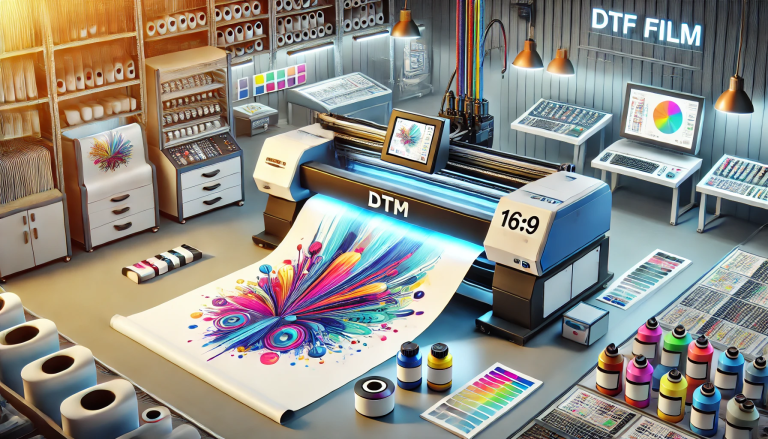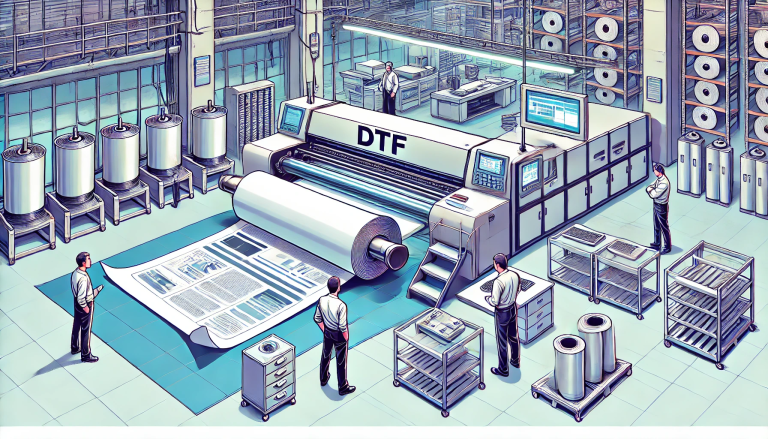“A Comprehensive Guide on How to Use UV DTF Film” -MAXDTF- China UV Film Transfer Film, China DTF UV Film, Made in China
As digital printing technology continues to evolve, new and exciting opportunities emerge for graphic design and printing enthusiasts. One such opportunity lies with UV DTF (Direct to Film) technology, an innovative printing technique that enables high-quality image transfers onto various surfaces. This blog post will guide you through the essentials of UV DTF film, its benefits, the process of using it, possible troubleshooting tips, and the impact of UV DTF technology on the printing industry.
1. What is UV DTF Film?
UV DTF, which stands for UltraViolet Direct to Film, is a modern printing technology that allows for the application of full-color designs onto a wide array of surfaces. The “film” part refers to a special transfer film that is used as an intermediary in the printing process. It provides a portable canvas on which high-resolution, vibrant designs can be printed using UV-curable ink and later transferred onto the desired surface. This technique can be applied on various substrates like textiles, ceramics, wood, metal, and more.
2. Benefits of Using UV DTF Film
The UV DTF method offers a range of benefits that set it apart from traditional printing techniques. The use of UV-curable inks and film results in high-resolution, durable, and vividly colored prints. The prints are more resistant to fading, scratches, and wear and tear compared to traditional inks, making them ideal for items that undergo frequent use.
Another significant benefit of UV DTF technology is its versatility. It can be used on a wide array of surfaces, from soft fabrics to hard surfaces like wood or metal, expanding the scope of products one can create. The process is also eco-friendly as the UV-curable inks are solvent-free and produce fewer VOCs (Volatile Organic Compounds).
3. Step-by-Step Guide to Using UV DTF Film
Here’s a simplified guide to using UV DTF film:
Step 1: Start by creating your design using graphic design software. Ensure the design is in high resolution for best results.
Step 2: Load the UV DTF film into your UV DTF printer. Ensure the film is placed correctly as per the printer’s instructions.
Step 3: Print the design onto the UV DTF film. The design will be printed in reverse order (mirror image) as it will be flipped during the transfer process.
Step 4: Once the printing is complete, cure the print under a UV light. This step hardens the ink and makes it ready for the transfer.
Step 5: Place the UV DTF film onto your chosen substrate, with the printed side facing down. Apply heat and pressure using a heat press.
Step 6: After the heat transfer process, peel off the film gently, leaving the design adhered to the substrate.
4. Troubleshooting Tips
Like any technical process, UV DTF printing might come with a few challenges. Here are some troubleshooting tips to ensure smooth operation:
Issue: Poor print quality. Solution: Ensure your design is in high resolution. Also, clean the printheads to avoid any ink clogs.
Issue: Design not transferring correctly. Solution: Ensure the heat press settings (temperature and pressure) are accurate. Also, make sure the substrate is suitable for UV DTF transfer.
5. Impact of UV DTF Technology on the Printing Industry
The advent of UV DTF technology has revolutionized the printing industry by providing a flexible, durable, and eco-friendly printing solution. This technology has broadened the horizons of print applications, especially in the realm of personalized products, promotional items, and fashion.
Its ability to create high-quality prints on diverse substrates has made it a game-changer, opening up an array of creative possibilities. Moreover, UV DTF technology aligns with the increasing demand for more environmentally conscious print solutions, making it a sustainable choice for the future.
To conclude, UV DTF film offers a versatile and high-quality printing method that suits various applications, from personal DIY projects to commercial production. With its easy application process, durability, and flexibility, it’s no wonder that UV DTF technology is transforming the way we print. Happy printing!




